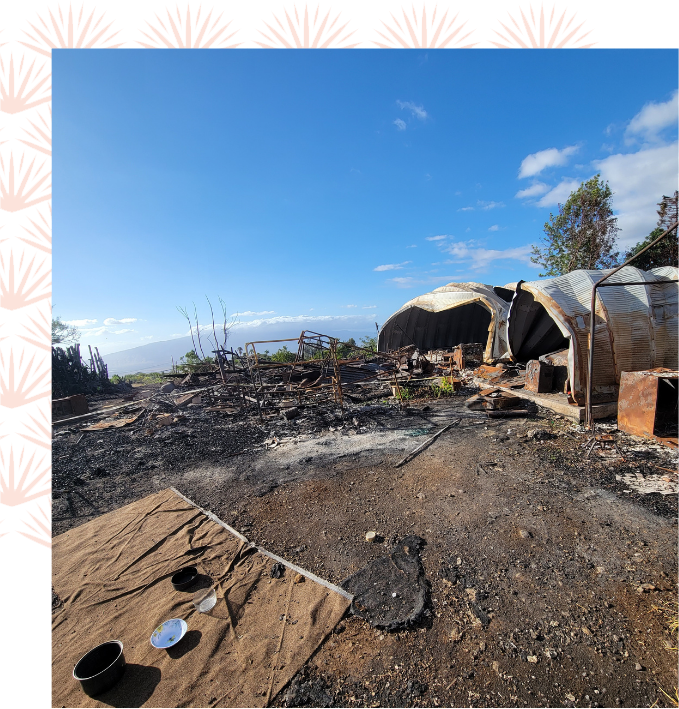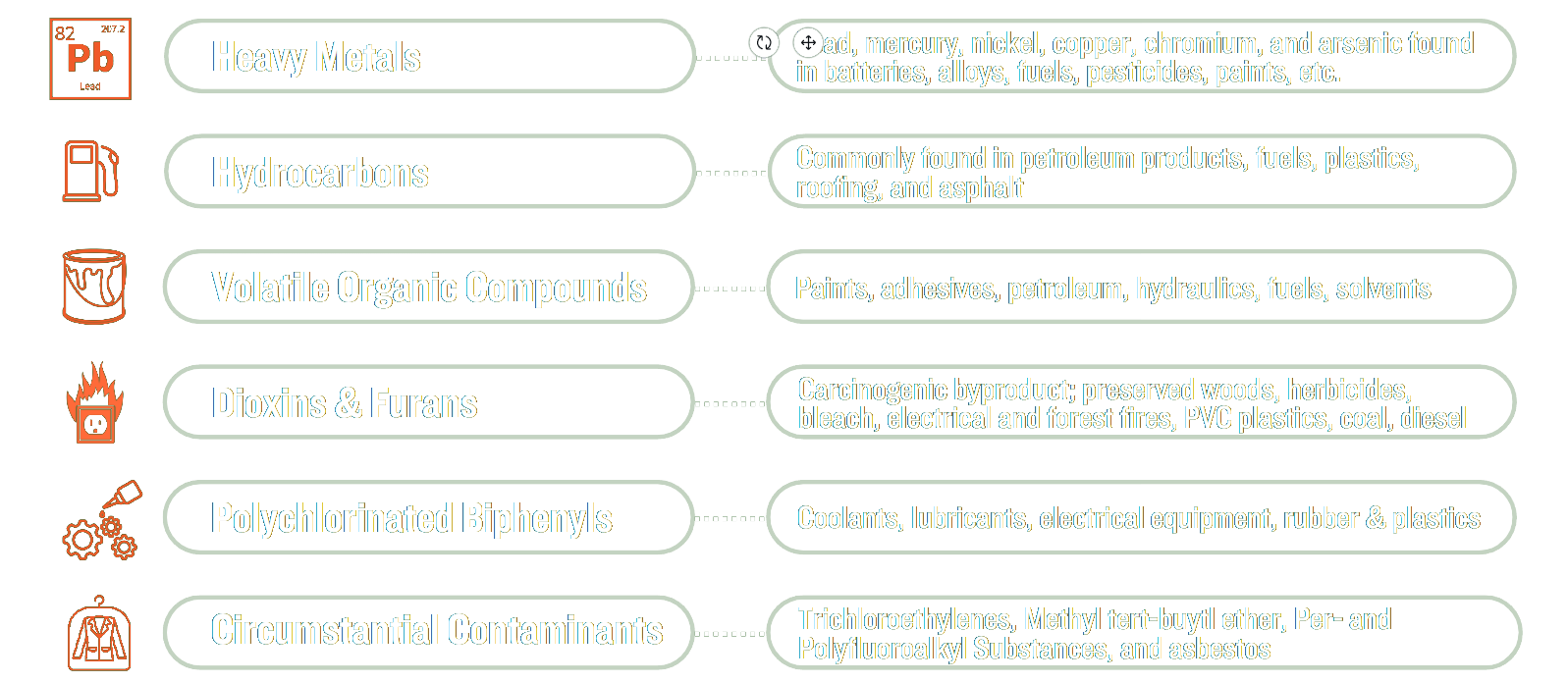
BIOREMEDIATION
Learn what it is and why it matters to Maui.


POST FIRE
CONTAMINATION
SOIL: The bulk of the treatable contaminants from the fire reside in the soil, building foundations, and concrete in the form of ash and char.
AIR: Ash is kicked up by vehicles and gusts of wind, and poses an ongoing health hazard both inside and around the burn areas.
WATER: The coming rain will mobilize contaminants in the ash, allowing them to travel increased distances across the groundʻs surface, entering into the ocean and water table.
COMMON POST FIRE CONTAMINENTS
Environmental pollutants pose a significant threat to both human and animal health, impacting the quality of air and soil. Addressing these challenges through effective bioremediation is crucial for safeguarding our ecosystem and ensuring a healthier future.

MITIGATING THE IMPACTS WITH BIOREMEDIATION
MITIGATING THE IMPACTS WITH BIOREMEDIATION
The practice of bioremediation means to work with living organisms & systems to detoxify, heal, & regenerate contaminated soil and water by binding, extracting, and/or transforming contaminants. Here’s how we’re activating bioremediation practices to restore our Maui lands.
Compost Tea/ Liquid Biological Soil Amendments
Liquid treatments with beneficial microorganisms enhance soil health in fire-affected areas. They increase microbial activity, break down contaminants, and promote soil structure, water retention, and nutrient availability, aiding ecosystem recovery.
Compost/ Solid Microbial Amendments
Bio-complete Compost, Biochar, and Bokashi: These amendments improve soil structure and microbial health. Compost provides nutrients, Biochar captures pollutants, and Bokashi adds beneficial microorganisms. Using them aids in pollutant breakdown and fosters new plant growth.
Fungi-Inoculated SiltSocks
Myco-Socks are mesh tubes filled with biomass & mushroom mycelium, which can uptake and neutralize various pollutants. They serve as living filters, purifying the water as it flows through them.
Plants/ Phytoremediation
Plants are used to extract pollutants from soil and water. Selected species absorb contaminants like heavy metals and organics, aiding breakdown through roots. Plants act as green buffers, curbing erosion and runoff, thus restoring soil and water quality.

